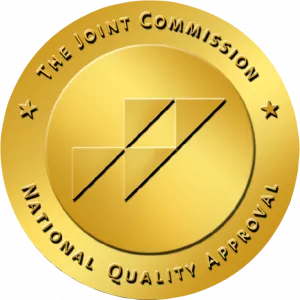Although codeine is often used as a mild painkiller, when misused or taken in excess it can cause serious health risks - such as overdose. Codeine overdose is a growing concern, especially with the rising misuse of prescription medications and the increasing trend of combining codeine with other substances such as alcohol or acetaminophen, which can amplify its harmful effects.
An overdose can result in slowed or stopped breathing, extreme drowsiness, unconsciousness, and even death if not treated promptly. While codeine is available in many households, its potential for addiction and overdose is often underestimated. Understanding the signs, risks, and treatment options for codeine overdose is critical for both patients and caregivers to ensure safe use and timely intervention in emergency situations.
Can You Overdose on Codeine?
Yes, you can absolutely overdose on codeine—and it can be life-threatening. Codeine is often viewed as a milder opioid, but that perception can be dangerously misleading. Taking too much codeine can overwhelm the central nervous system, leading to serious and potentially fatal consequences. Overdose symptoms may include extreme drowsiness, confusion, slowed or stopped breathing, cold or clammy skin, bluish lips or fingertips, and unresponsiveness.
The risk is even greater when codeine is combined with other depressants like alcohol, benzodiazepines, or medications containing acetaminophen, which can also cause liver damage. In severe cases, a codeine overdose can lead to coma or death without immediate intervention. Emergency treatment, including the use of naloxone (Narcan), can reverse the effects if administered in time, highlighting the importance of recognizing the signs and acting quickly.

What Is Codeine?
Codeine is an opioid medication derived from the opium poppy, classified as a Schedule II or III controlled substance in many countries due to its potential for misuse and dependence. It acts by binding to mu-opioid receptors in the central nervous system, blocking pain signals and altering the perception of pain. In clinical practice, codeine is available in various formulations (tablets, syrups, combination products) and is often prescribed for mild to moderate pain relief, as well as to suppress severe coughing in acute respiratory conditions.
Despite its reputation as a “milder” opioid, codeine still carries all of the core risks associated with this drug class: respiratory depression, sedation, constipation, and the potential for tolerance and physical dependence. Some people’s bodies turn codeine into morphine very quickly, which can increase both pain relief and side effects, while others break it down slowly and get little relief. Also, codeine mixed with acetaminophen can cause liver damage if taken in high doses. For these reasons, prescribers must carefully assess each patient’s medical history, concomitant medications, and potential risk factors before initiating codeine therapy.
Codeine Overdose Symptoms and Effects:
You may wonder, can you overdose on codeine?
Yes, you can overdose on codeine. These are some symptoms of a codeine overdose:
- Slow or shallow breathing (can even stop breathing)
- Extreme drowsiness or trouble staying awake
- Cold, clammy skin
- Small (pinpoint) pupils
- Weak pulse
- Bluish lips or fingertips (sign of not enough oxygen)
- Low blood pressure
- Nausea or vomiting
- Confusion or dizziness
- Loss of consciousness
- Seizures (in severe cases)
- Coma (in very serious cases

How Much Codeine Is Too Much?
Determining how much codeine is “too much” depends on factors like age, weight, genetics, tolerance, and overall health. For adults, the typical maximum is 60 mg per dose and 360 mg per day. Exceeding these amounts, especially in those without prior opioid use, can lead to serious risks like slowed breathing or overdose.
Can codeine kill you? A codeine fatal dose is typically around 500–1,000 mg, but lethal effects can occur at lower doses, especially when combined with other depressants like alcohol or benzodiazepines.
For children, codeine is especially risky and must be dosed by weight, typically 0.5 to 1 mg per kg every 4–6 hours. Small miscalculations can be harmful, which is why the FDA has banned codeine use in children under 12 and restricted its use in older minors. In short, any dose beyond what's prescribed or taken without medical supervision can be too much, especially when combined with other medications or health issues.
Mixing Codeine with Other Pharmaceuticals
Mixing codeine with other sedatives, such as alcohol, benzodiazepines (like Valium or Xanax), barbiturates, or sleep aids, greatly increases the risk of dangerous side effects like slowed breathing and extreme drowsiness. This happens because all these drugs work together to slow brain activity, especially in areas which control breathing and alertness. Even moderate amounts can lead to life-threatening effects like slowed breathing, low blood pressure, and loss of consciousness. Many fatal opioid overdoses involve a combination of drugs, not just codeine.
Codeine is also often combined with acetaminophen (such as in Tylenol #3 or #4), which can mask early signs of overdose. Taking too much to get a stronger high can cause serious liver damage from the acetaminophen. Additionally, mixing codeine with certain antidepressants can cause serotonin syndrome, a serious condition with symptoms like restlessness, high fever, and stiff muscles. Drugs like fluoxetine make codeine less effective, while rifampin makes it stronger and more dangerous.

Codeine Overdose Death
A deadly codeine overdose occurs when breathing becomes so weak that the body and brain run out of oxygen. At first, a person’s breathing slows and becomes shallow. If the overdose continues, breathing can stop entirely, causing low oxygen levels, heart failure, and death. After death, doctors often find fluid in the lungs and signs that the person inhaled vomit, showing that they lost their gag reflex. Overdose victims are usually found unconscious with tiny pupils, frothy fluid at the mouth, and blue-tinged skin, all common signs of opioid poisoning.
The risk of death is much higher when codeine is used together with other drugs that also slow breathing, such as alcohol or benzodiazepines. Although codeine on its own causes fewer fatalities than stronger opioids, it still plays a major role in deaths involving multiple substances. People who are older with weaker lung function, those with untreated sleep apnea, and those with heart or lung disease are especially vulnerable. In addition, some individuals have a genetic variation that turns codeine into morphine very quickly, which can cause sudden, severe breathing failure even at normal doses. Health experts warn that any misuse of codeine, especially when mixing it with other depressants, can be deadly.
Preventing a Codeine Overdose
There are several factors that go into preventing a codeine overdose.
- Prevention starts with careful prescribing. Doctors should analyze each patient’s risk factors, such as a history of drug abuse, alcohol or benzodiazepine abuse, or respiratory problems, before prescribing codeine. Whenever possible, people should try non-opioid treatments (such as ibuprofen, naproxen or physical therapy) or safer opioids that don’t rely heavily on liver enzymes to work.
- If codeine is necessary, it should be prescribed at the lowest effective dose, with clear instructions on how often to take it. Patients need to know not to increase their dose, mix it with alcohol, or share it with others.
- Patients can also play a key role in prevention by following their prescription instructions exactly: never taking more than directed, avoiding extra doses for stronger pain relief, and keeping codeine locked away and out of reach of children.
- Unused or expired tablets should be dropped off at take-back programs or community disposal sites to prevent misuse.
- For patients who are especially vulnerable, such as those with sleep apnea or chronic lung disease, doctors might provide a naloxone kit for emergencies.
- Finally, using prescription drug monitoring programs can help doctors and pharmacists spot if someone is receiving codeine from multiple sources, reducing the chance of overdose.
Codeine Overdose Treatment
Immediate treatment for a codeine overdose focuses on restoring breathing and providing emergency care immediately. Breathing can slow down or stop entirely during an overdose, so quick action is critical. If someone shows signs like unresponsiveness, breathing fewer than 10 times per minute, or having blue lips or skin, it may signal a codeine overdose.
Follow these emergency steps immediately if you suspect a codeine overdose:
- Call 911
- Give Naloxone (Narcan), if available.
- Start rescue breathing or chest compressions if the person isn’t breathing or has no pulse.
- Keep the person lying on their side to prevent choking in case they vomit.
Codeine Addiction Treatment
Codeine addiction—or opioid use disorder (OUD) related to codeine—requires a comprehensive treatment plan which addresses both physiological dependence and behavioral health needs. Medication-assisted treatment (MAT) is the gold standard, employing FDA-approved medications such as buprenorphine (Suboxone, Subutex), methadone, or naltrexone to stabilize brain chemistry, reduce cravings, and minimize withdrawal symptoms. Buprenorphine can be prescribed in outpatient settings, whereas methadone is often dispensed through specialized clinics. For patients who prefer non-opioid options, extended-release injectable naltrexone (Vivitrol) blocks opioid receptors and helps thwart relapse.
Behavioral interventions are equally vital: cognitive-behavioral therapy (CBT) helps individuals identify triggers, develop coping strategies, and rebuild a structured life free from substance misuse. Support groups—such as Narcotics Anonymous (NA) or SMART Recovery—provide peer encouragement and accountability. Family therapy may address relational dynamics that contribute to ongoing use or relapse. In severe cases where outpatient services prove insufficient, residential rehabilitation programs offer 24-hour supervision, medical detoxification, and immersive counseling. Follow-up care (aftercare) is crucial; ongoing case management, sober living arrangements, and regular check-ins with addiction specialists significantly improve long-term recovery outcomes.
Addiction Treatment at Avenues Recovery
If you or your loved one are struggling with codeine addiction, reach out to us at Avenues Recovery to receive expert guidance and care. Our friendly admissions team will give you a free evaluation and direct you to the program best suited to you. At Avenues, we believe that everyone can recover and our expert staff never, ever give up on anyone. Reach out to us today to join our thriving recovery community and to begin your journey to the sober future of your dreams.



